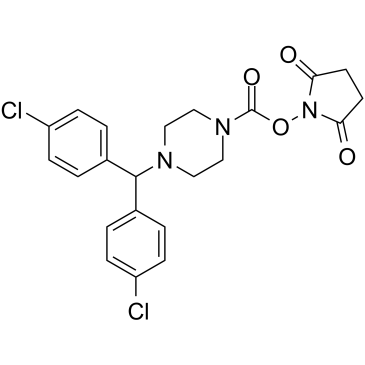The Selective Monoacylglycerol Lipase Inhibitor MJN110 Produces Opioid-Sparing Effects in a Mouse Neuropathic Pain Model.
Jenny L Wilkerson, Micah J Niphakis, Travis W Grim, Mohammed A Mustafa, Rehab A Abdullah, Justin L Poklis, William L Dewey, Hamid Akbarali, Matthew L Banks, Laura E Wise, Benjamin F Cravatt, Aron H Lichtman
Index: J. Pharmacol. Exp. Ther. 357 , 145-56, (2016)
Full Text: HTML
Abstract
Serious clinical liabilities associated with the prescription of opiates for pain control include constipation, respiratory depression, pruritus, tolerance, abuse, and addiction. A recognized strategy to circumvent these side effects is to combine opioids with other antinociceptive agents. The combination of opiates with the primary active constituent of cannabis (Δ(9)-tetrahydrocannabinol) produces enhanced antinociceptive actions, suggesting that cannabinoid receptor agonists can be opioid sparing. Here, we tested whether elevating the endogenous cannabinoid 2-arachidonoylglycerol through the inhibition of its primary hydrolytic enzyme monoacylglycerol lipase (MAGL), will produce opioid-sparing effects in the mouse chronic constriction injury (CCI) of the sciatic nerve model of neuropathic pain. The dose-response relationships of i.p. administration of morphine and the selective MAGL inhibitor 2,5-dioxopyrrolidin-1-yl 4-(bis(4-chlorophenyl)methyl)piperazine-1-carboxylate (MJN110) were tested alone and in combination at equieffective doses for reversal of CCI-induced mechanical allodynia and thermal hyperalgesia. The respective ED50 doses (95% confidence interval) of morphine and MJN110 were 2.4 (1.9-3.0) mg/kg and 0.43 (0.23-0.79) mg/kg. Isobolographic analysis of these drugs in combination revealed synergistic antiallodynic effects. Acute antinociceptive effects of the combination of morphine and MJN110 required μ-opioid, CB1, and CB2 receptors. This combination did not reduce gastric motility or produce subjective cannabimimetic effects in the drug discrimination assay. Importantly, combinations of MJN110 and morphine given repeatedly (i.e., twice a day for 6 days) continued to produce antiallodynic effects with no evidence of tolerance. Taken together, these findings suggest that MAGL inhibition produces opiate-sparing events with diminished tolerance, constipation, and cannabimimetic side effects. Copyright © 2016 by The American Society for Pharmacology and Experimental Therapeutics.
Related Compounds
| Structure | Name/CAS No. | Molecular Formula | Articles |
|---|---|---|---|
 |
MJN110
CAS:1438416-21-7 |
C22H21Cl2N3O4 |
|
Effect of selective inhibition of monoacylglycerol lipase (M...
2015-02-01 [Psychopharmacol. Ser. 232(3) , 583-93, (2015)] |
|
Proteome-wide reactivity profiling identifies diverse carbam...
2013-07-19 [ACS Chem. Biol. , (2013)] |
|
Evaluation of NHS carbamates as a potent and selective class...
2013-09-18 [ACS Chem. Neurosci. 4(9) , 1322-32, (2013)] |